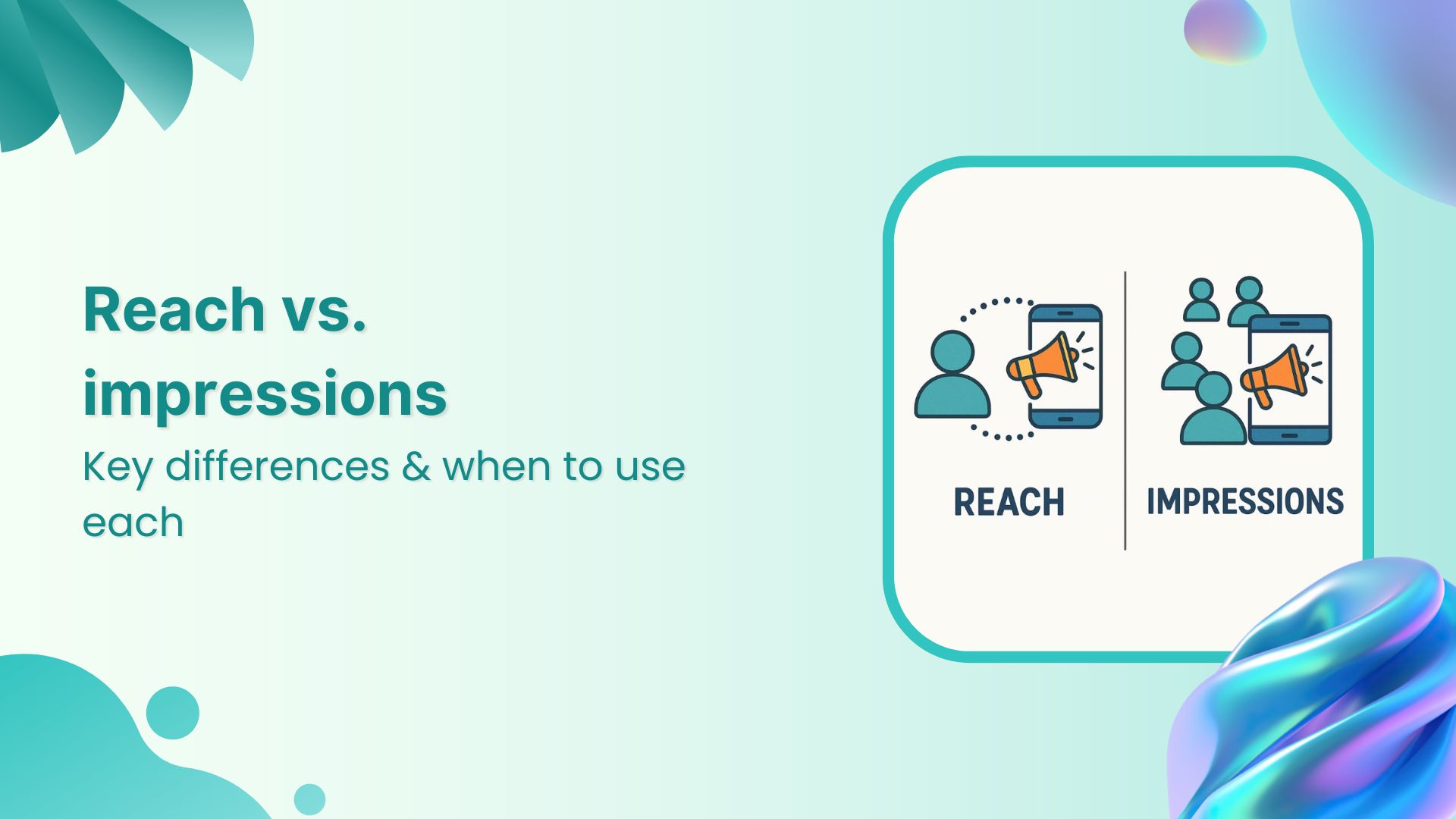Data visualization

What is data visualization?
Data visualization is the graphical representation of information and data using visual elements such as charts, graphs, maps, and other visual formats. It enables marketers, analysts, and decision-makers to understand complex data patterns, trends, and relationships more effectively by presenting them in a visually appealing and comprehensible manner.
In the context of digital marketing and social media management, data visualization serves as a crucial tool for transforming raw metrics and analytics into actionable insights.
Why is data visualization important in digital marketing?
Enhanced data comprehension
Data visualization simplifies complex information, making it easier for stakeholders at all levels to understand and interpret data. When working with social media analytics and reporting tools, visual representations help teams quickly grasp performance metrics and identify patterns that might be difficult to spot in raw data.
Faster decision-making
Visual data presentations enable faster and more informed decision-making by highlighting key trends and patterns at a glance. This is particularly valuable when analyzing social media performance metrics across multiple platforms and campaigns.
Improved stakeholder communication
Visualizations make it easier to communicate complex data findings to various stakeholders, from team members to clients. This is especially important when creating social media reports or presenting campaign results to clients.
Pattern recognition
Visual representations help identify trends, correlations, and anomalies more efficiently than raw data. This is crucial when conducting competitor analytics or analyzing market trends.
Types of data visualization in digital marketing
Charts and graphs
- Line charts: Ideal for showing trends over time.
- Bar charts: Perfect for comparing values across categories.
- Pie charts: Useful for displaying composition and proportions.
- Area charts: Effective for showing cumulative totals over time.
- Scatter plots: Great for identifying correlations between variables.
Dashboards
Modern marketing dashboards combine multiple visualization types to provide a comprehensive view of performance metrics. ContentStudio's ultimate dashboard exemplifies how integrated visualizations can provide actionable insights across various marketing channels.
Heat maps
Heat maps use color intensity to show data concentration or activity levels, particularly useful in analyzing user behavior and engagement patterns across different content types and platforms.
Infographics
Infographics combine various visualization types with design elements to tell a comprehensive data story, making them perfect for content marketing and social media sharing.
Best practices for effective data visualization
Choose the right visualization type
Select visualization formats that best suit your data type and the story you want to tell. For example, when analyzing Instagram analytics, use line charts for follower growth and bar charts for engagement rates.
Maintain clarity and simplicity
Avoid cluttering visualizations with unnecessary elements. Keep designs clean and focused on the key message you want to convey. This is particularly important when creating client reports that need to be quickly understood.
Use consistent styling
Maintain consistent colors, fonts, and styling across all visualizations within a report or dashboard. This helps create a cohesive narrative and strengthens brand identity.
Include context
Provide necessary context through titles, labels, and annotations. This helps viewers understand what they're looking at and why it matters.
Data visualization tools and platforms
Analytics platforms
Major social media platforms offer built-in analytics tools with visualization capabilities. For instance, Facebook Analytics and LinkedIn Analytics provide various visualization options for performance metrics.
Specialized visualization tools
Dedicated visualization tools offer more advanced features and customization options. These tools often integrate with various data sources and provide real-time visualization capabilities.
Marketing management platforms
Comprehensive marketing platforms like ContentStudio combine data collection, analysis, and visualization capabilities. These platforms often provide powerful content insights through customizable dashboards and reporting features.
Common challenges in data visualization
Data complexity
Managing and visualizing large datasets while maintaining clarity and relevance can be challenging. This is particularly true when dealing with social data for business success.
Tool limitations
Different visualization tools have various limitations in terms of customization, data integration, and scaling capabilities. Understanding these limitations is crucial for choosing the right tool for your needs.
User expertise
Creating effective visualizations requires a combination of technical skills, design knowledge, and data understanding. Regular training and updating skills are essential as visualization tools and techniques evolve.
Future trends in data visualization
Interactive visualizations
The future of data visualization lies in interactive elements that allow users to explore data dynamically. This trend aligns with predictions about the future of social media and digital marketing.
AI-powered insights
Artificial intelligence is increasingly being used to automatically generate relevant visualizations and highlight important patterns in data, making it easier for marketers to derive insights.
Real-time visualization
The ability to visualize data in real-time is becoming more important as marketing becomes more dynamic and responsive to immediate market conditions.
Impact on business decision-making
Strategic planning
Data visualization helps in strategic planning by making it easier to identify opportunities and challenges across different marketing channels and campaigns.
Performance monitoring
Visual representations enable continuous monitoring of key performance indicators (KPIs) and quick identification of areas needing attention or improvement.
Resource allocation
Better visualization of performance data helps in making informed decisions about resource allocation across different marketing channels and campaigns.
Ethical considerations in data visualization
Data accuracy
Ensuring accurate representation of data through visualizations is crucial for maintaining trust and making informed decisions. This aligns with ContentStudio's commitment to data and ethics.
Transparency
Being transparent about data sources, collection methods, and any limitations helps maintain credibility and trust with stakeholders.
Privacy concerns
When visualizing user data, it's important to consider privacy implications and ensure compliance with relevant data protection regulations.
Data visualization is an essential tool in modern digital marketing, enabling better understanding, communication, and decision-making based on complex data sets. As marketing becomes increasingly data-driven, the ability to create effective visualizations will become even more crucial for success.
By understanding the principles, best practices, and tools available for data visualization, marketers can better leverage their data to drive business growth and achieve their marketing objectives.

Create, plan, schedule, and publish posts on all social media networks





